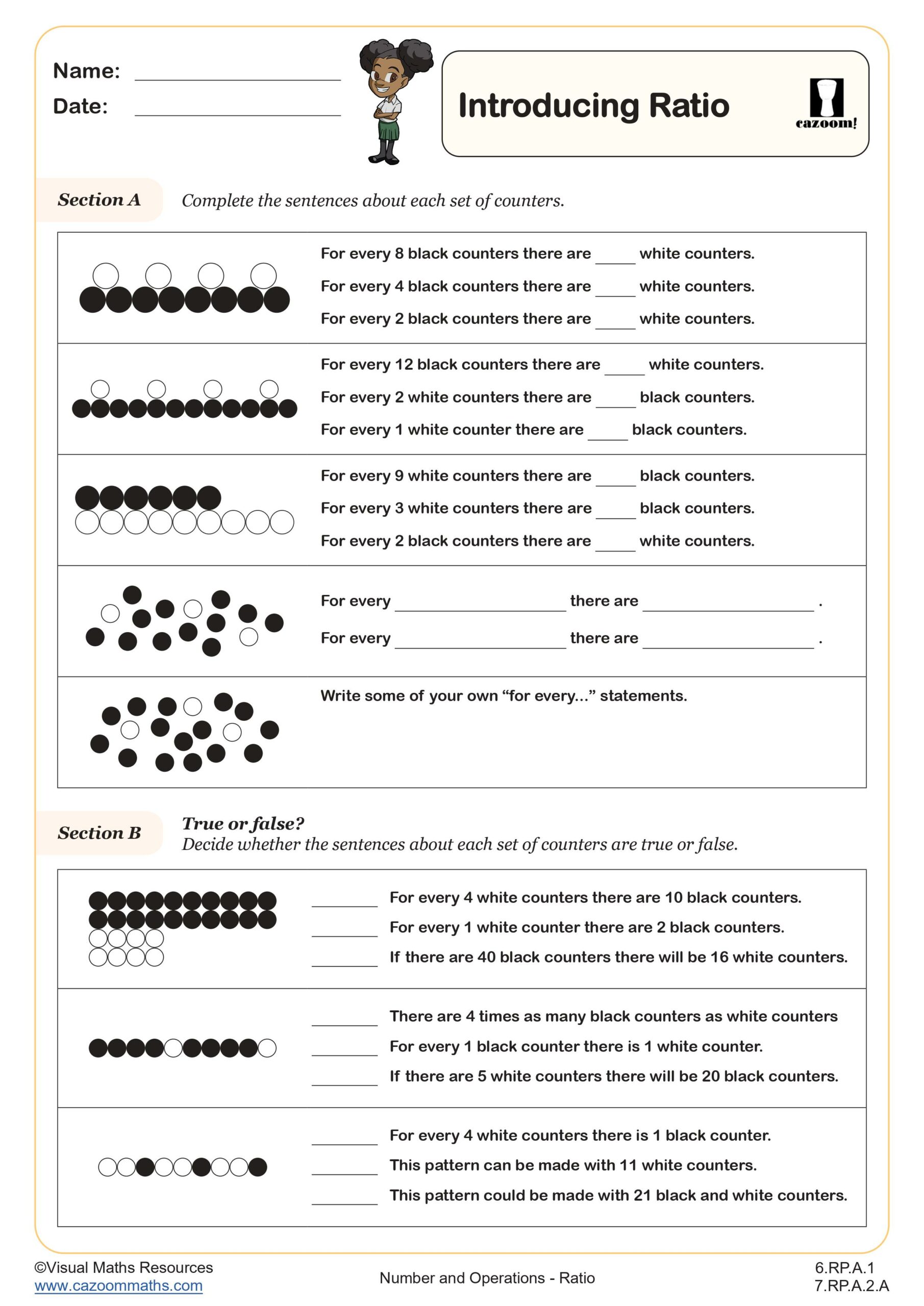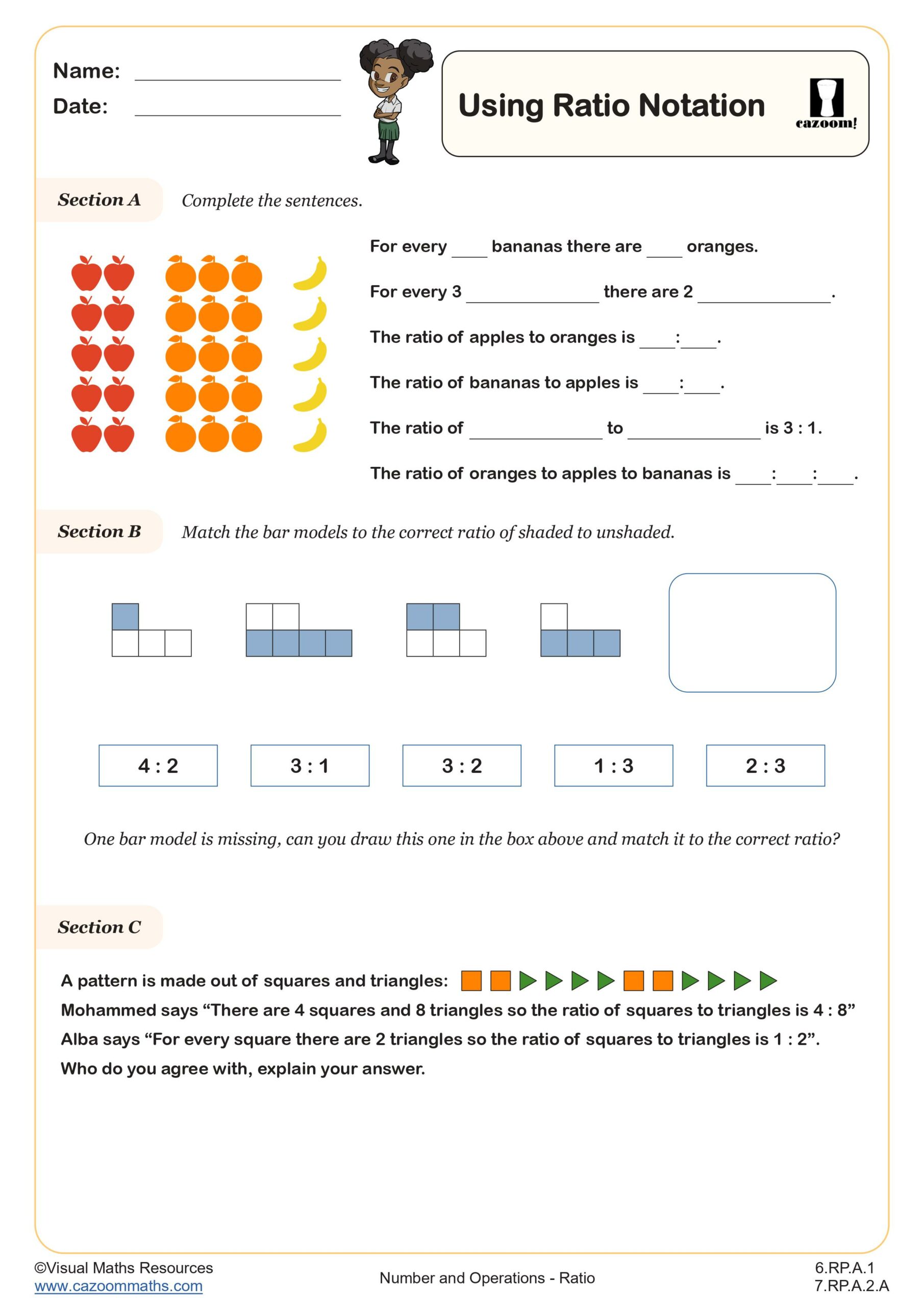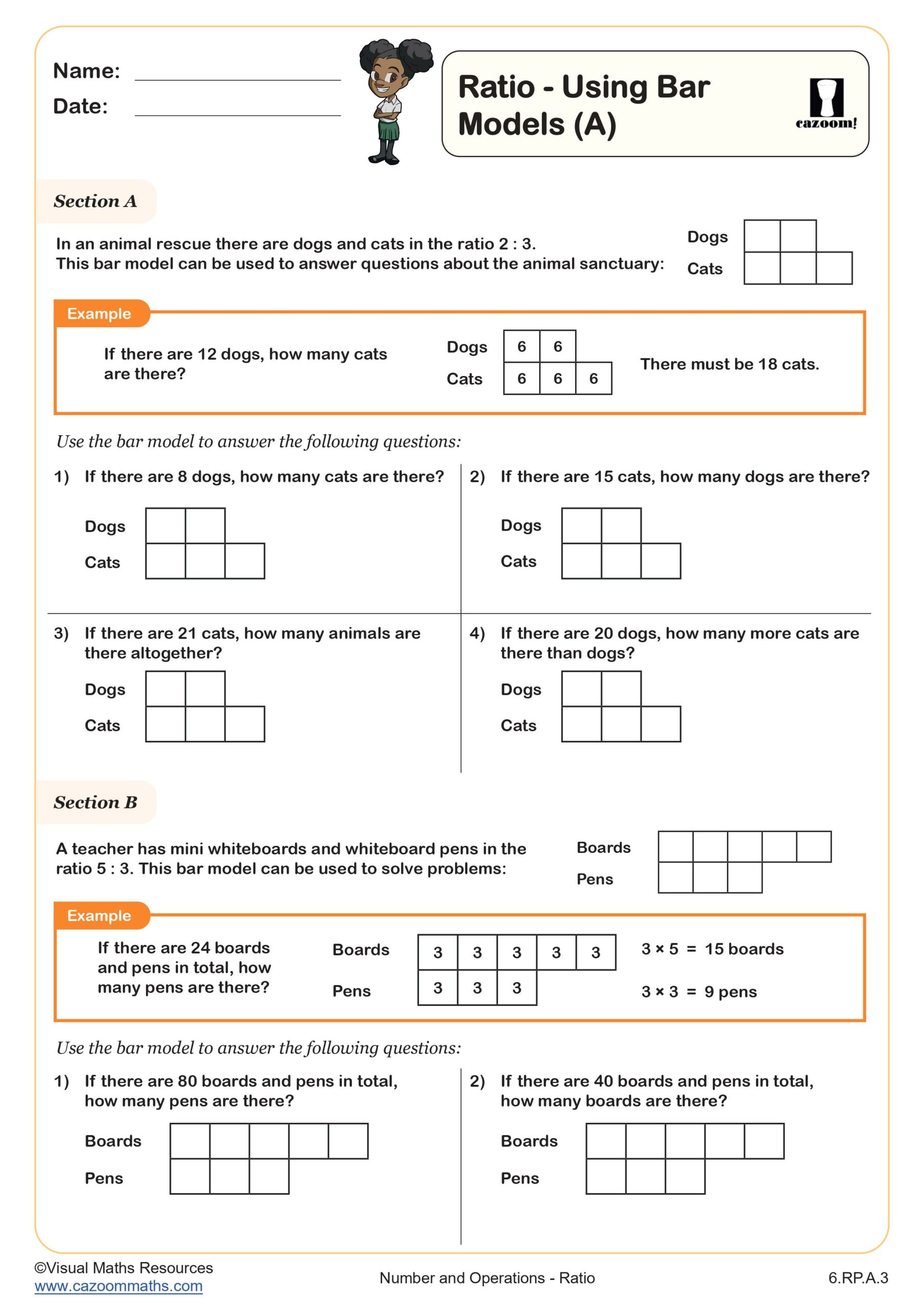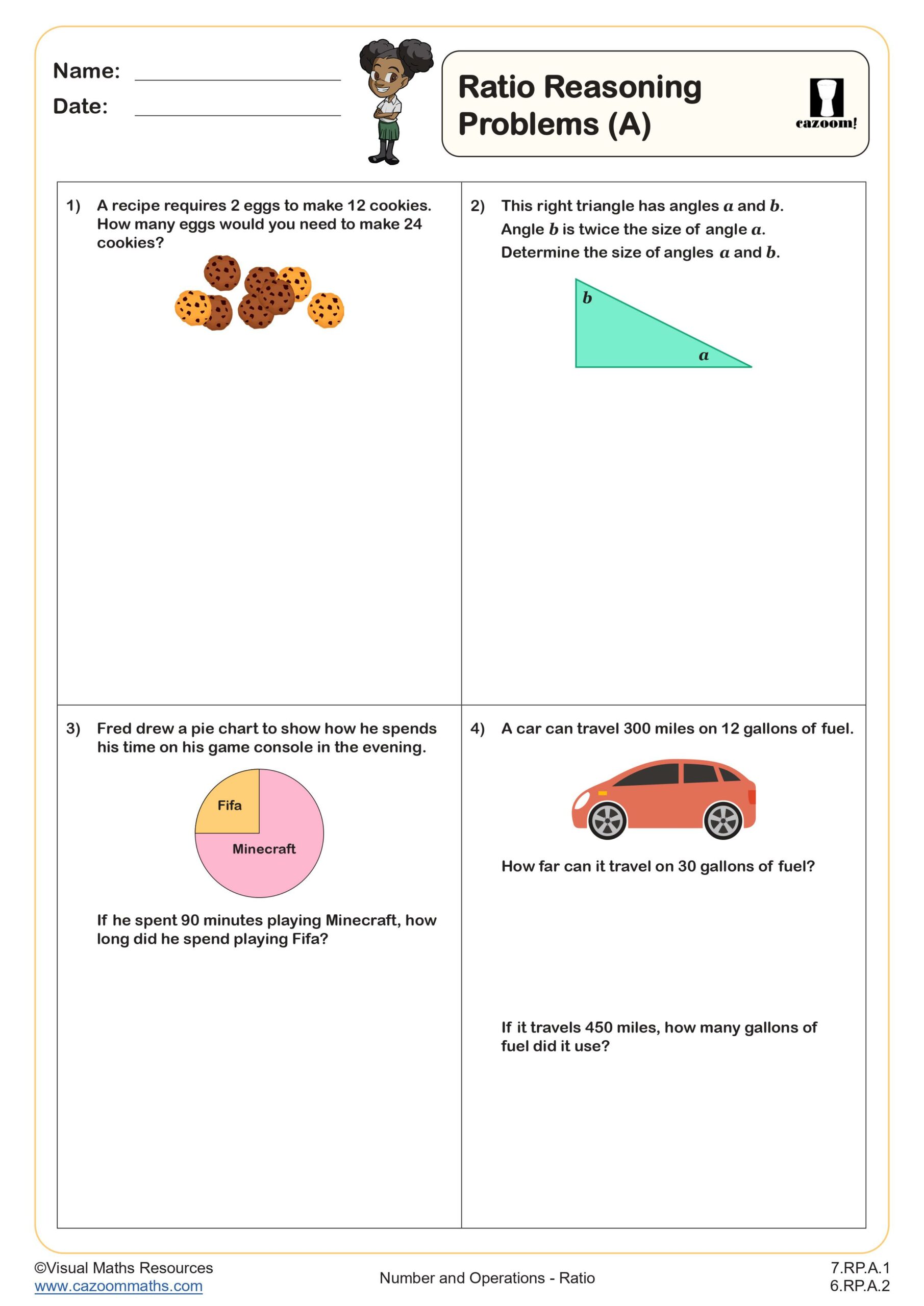Ratio - Using Bar Models (B) WORKSHEET
Ratio - Using Bar Models (B) WORKSHEET DESCRIPTION
Bar models are used throughout this worksheet as a tool for students to divide amounts into given ratios.
The worksheet is scaffolded by including drawn bar models for sections A to D. The scaffolding decreases as labels are removed, and students have to label more of the bar models themselves.
In section B, learners will be dividing amounts into given ratios. Section C asks students to use one known amount to find the second amount, and in section D, the difference is known. Finally, section E is made up of three questions, and students must use an appropriate method to solve each one, including constructing their own bar models.
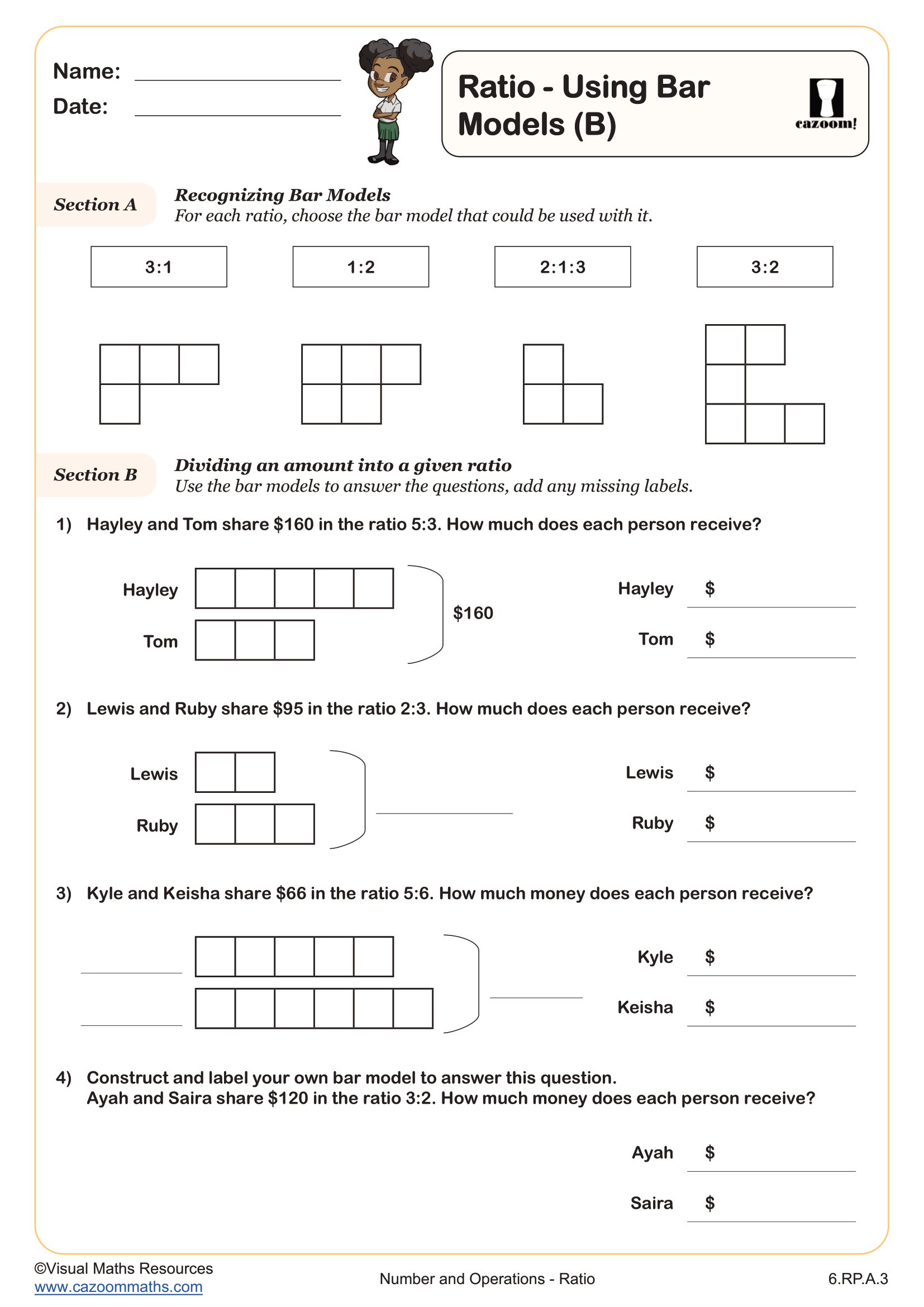
RELATED TO Ratio - Using Bar Models (B) WORKSHEET
Frequently Asked Questions
This ratio - using bar models (b) worksheet is designed for students in 6th Grade and aligns with Common Core State Standards.
